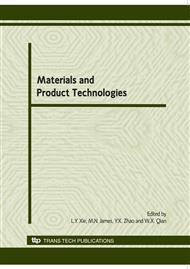[1]
MVM Yeo, X Li, K Shen, and EPV Wilder-Smith, Can SVM be used for automatic EEG detection of drowsiness during car driving?, Safety Science, no. 47, pp.115-124, (2009).
DOI: 10.1016/j.ssci.2008.01.007
Google Scholar
[2]
LN Boyle, J Tippin, A Paul, and M Rizzo, Driver performance in the momentss urrounding a microsleep, Transportation Research Part F, no. 11, pp.126-136, (2008).
DOI: 10.1016/j.trf.2007.08.001
Google Scholar
[3]
MA Schier, Changing in EEG alpha power during simulated driving: a demonstration, International Journal of Psychophysiology, no. 37, pp.155-162, (2000).
DOI: 10.1016/s0167-8760(00)00079-9
Google Scholar
[4]
PF Chang, L Arendt-Nielsen, T Graven- Nielsen, P Svensson, and CN Chen, Comparative EEG activation to skin pain and muscle pain induced by capsaicin injection, International Journal of Psychophysiology, no. 51, pp.117-126, (2004).
DOI: 10.1016/j.ijpsycho.2003.01.001
Google Scholar
[5]
S Herring, and MS Hallbeck, The effects of distance and height on maximal isometric push and pull strength with reference to manual transmission truck drivers, International Journal of Industrial Ergonomics, no. 37, pp.685-696, (2007).
DOI: 10.1016/j.ergon.2007.05.003
Google Scholar
[6]
C Guger, W Domej, G Lindner, K Pfurtscheller, G Pfurtscheller, and G Edlinger, Effects of a fast cable car ascent to an altitude of 2700 meters on EEG and ECG, �euroscience Letters, no. 377, pp.53-58, (2005).
DOI: 10.1016/j.neulet.2004.11.065
Google Scholar
[7]
S Otmani, T Pebayle, J Roge, and A Muzet, Effect of driving duration and partial sleep deprivation on subsequent alertness and performance of car drivers, Physiology & Behavior, no. 84, pp.715-724, (2005).
DOI: 10.1016/j.physbeh.2005.02.021
Google Scholar
[8]
B Diehl, SRG Stodieck, RR Diehl, and EB Ringelstein, The photic driving EEG response and photo reactive cerebral blood flow in the posterior cerebral artery in controls and in patients with epilepsy, Electroencephalography and clinical �europhysiology, no. 107, pp.8-12, (1998).
DOI: 10.1016/s0013-4694(98)00036-4
Google Scholar
[9]
J Sarnthein, A Morel, A von Stein, and D Jeanmonod, Thalamocortical theta coherence in neurological patients at rest and during a working memory task, International Journal of Psychophysiology, no. 57, pp.87-96, (2005).
DOI: 10.1016/j.ijpsycho.2005.03.015
Google Scholar
[10]
C Joyce, and B Rossion, The face-sensitive N170 and VPP components manifest the same brain processes: The effect of reference electrode site, Clinical �europhysiology, no. 116, pp.2613-2631, (2005).
DOI: 10.1016/j.clinph.2005.07.005
Google Scholar
[11]
A Mecklinger, M Johansson, M Parra, and S Hanslmayr, Source-retrieval requirements influence late ERP and EEG memory effects, Brain Research, no. 1172, pp.110-123, (2007).
DOI: 10.1016/j.brainres.2007.07.070
Google Scholar
[12]
PA Leynes, JA Grey, and JT Crawford, Event-related potential (ERP) evidence for sensory-based action memories, International Journal of Psychophysiology, no. 62, pp.193-202, (2006).
DOI: 10.1016/j.ijpsycho.2006.04.003
Google Scholar
[13]
A Williamon, and T Egner, Memory structures for encoding and retrieving a piece of music: an ERP investigation, Cognitive Brain Research, no. 22, pp.36-44, (2004).
DOI: 10.1016/j.cogbrainres.2004.05.012
Google Scholar
[14]
T Fehr, P Wiedenmann, and M Herrmann, Nicotine Stroop and addiction memory-an ERP study, International Journal of Psychophysiology, no. 62, pp.224-232, (2006).
DOI: 10.1016/j.ijpsycho.2006.01.011
Google Scholar
[15]
HK Gomarus, AA Wijers, RB Minderaa, and M Althaus, ERP correlates of selective attention and working memory capacities in children with ADHD and/or PDD-NOS, Clinical �europhysiology, no. 120, pp.60-72, (2009).
DOI: 10.1016/j.clinph.2008.10.018
Google Scholar
[16]
JS Murphy, CE Wynne, EM O'Rourke, S Commins, and RAP Roche, High-resolution ERP mapping of cortical activation related to implicit object-location memory, Biological Psychology, no. 82, pp.234-245, (2009).
DOI: 10.1016/j.biopsycho.2009.08.002
Google Scholar
[17]
W Klimesch, EEG alpha and theta oscillations reflect cognitive and memory performance: are view and analysis, Brain Research Reviews, no. 29, pp.169-195, (1999).
DOI: 10.1016/s0165-0173(98)00056-3
Google Scholar
[18]
A Glass, and RJ Riding, EEG differences and cognitive style, Biological Psychology, no. 51, pp.23-41, (1999).
DOI: 10.1016/s0301-0511(99)00014-9
Google Scholar
[19]
C Babiloni, GB Frisoni, M Pievani, L Toscano, CD Percio, C Geroldi, F Eusebi, C Miniussi, and PM Rossini, White-matter vascular lesions correlate with alpha EEG sourcesin mild cognitiv eimpairment, �europsychologia, no. 46, pp.1707-1720, (2008).
DOI: 10.1016/j.neuropsychologia.2008.03.021
Google Scholar
[20]
YAL Pijnenburg, Y vd Made, AM van Cappellen van Walsum, DL Knol, Ph Scheltens, and CJ Stam, EEG synchronization likelihood in mild cognitive impairment and Alzheimer's disease during a working memory task, Clinical �europhysiology, no. 115, pp.1332-1339, (2004).
DOI: 10.1016/j.clinph.2003.12.029
Google Scholar
[21]
M Kolich, A conceptual framework proposed to formalize the scientific investigation of automobile seat comfort, Applied Ergonomics, no. 39, pp.15-27, (2008).
DOI: 10.1016/j.apergo.2007.01.003
Google Scholar


